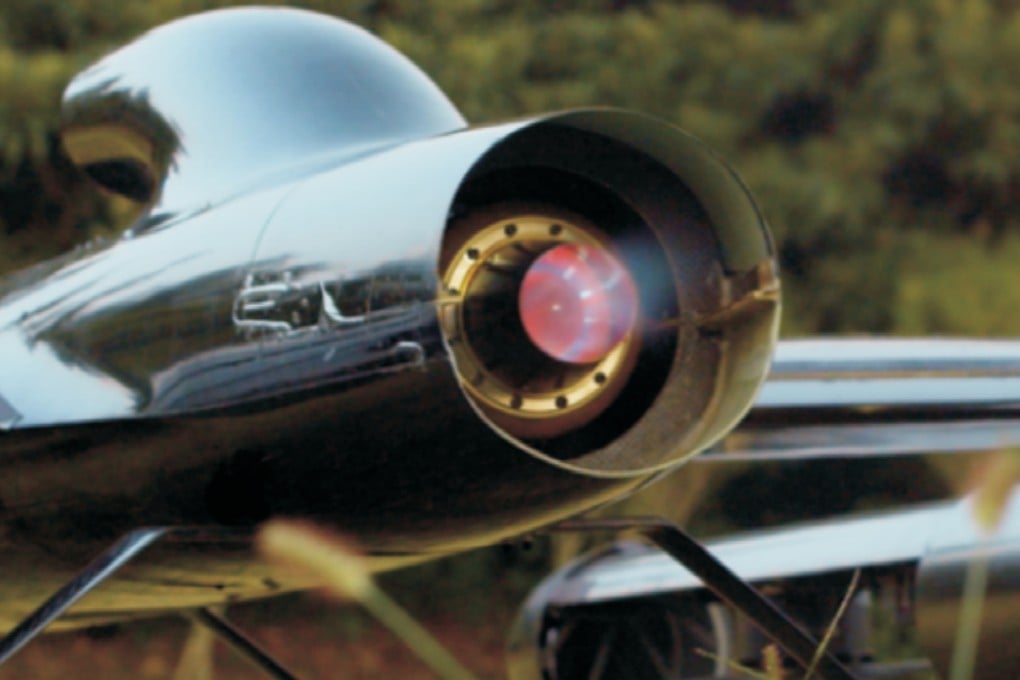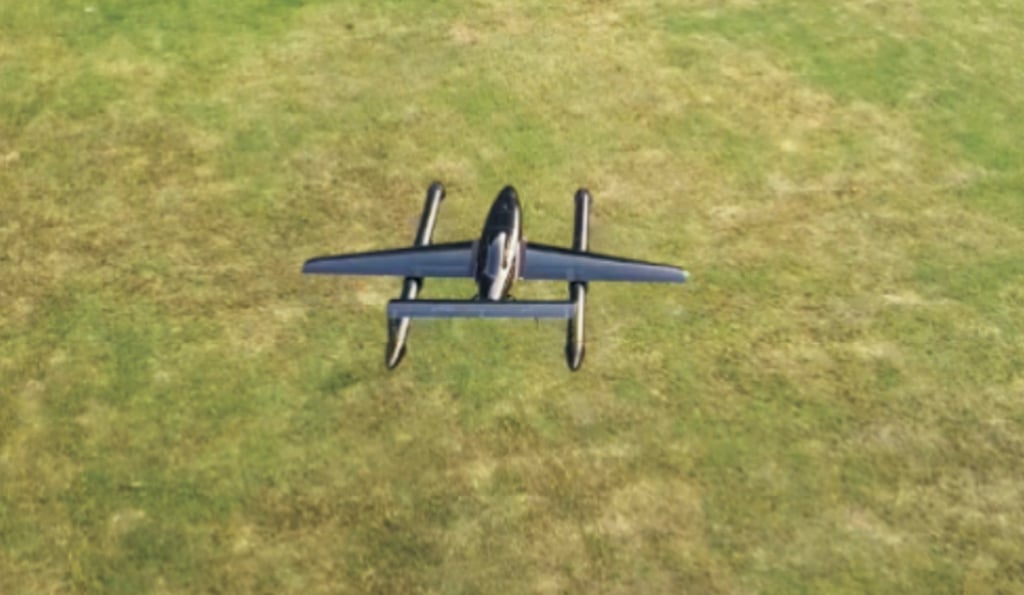China now has a capability that it claims its rivals lack: a Vertical Take Off and Landing (VTOL) drone that can operate practically out of any warship, transforming it into a mini aircraft carrier and significantly increasing its operational reach.
Chinese aerospace engineers have unveiled what they claim could be the world’s first operational high-speed vertical take-off and landing (VTOL) drone powered by a jet engine, according to a latest South China Morning Post (SCMP) report. The innovation is described as an aviation breakthrough that can transform naval warfare.
This unnamed drone is reportedly a sleek design that is runway independent, unlike most drones launched at sea that require carrier decks to launch.
This new drone can be launched from any warship in the Chinese arsenal and transition seamlessly into a fast, long-range cruise flight even in rough seas that typically make operations tedious.
The drone was created over ten years under the direction of associate professors Wang Yaokun and Qiu Yuting at Beihang University, a prestigious aviation research center in Beijing that was sanctioned due to its involvement in the development of military rocket systems and Unmanned Aerial Systems (UAVs), according to the US Department of Justice.
“We’ve compared it to other mainstream VTOL drones at present. It is far superior in terms of speed,” wrote the project team in a peer-reviewed paper published in the Chinese-language journal Aero Weaponry on July 15. The researchers said that, unlike the US Air Force XQ-58A, which requires long runways or aircraft carriers for take-off and landing, this new Chinese platform combines vertical lift ability with jet-powered high-speed flight in a single, aerodynamically refined airframe.

The drone is a significant divergence from traditional drone designs and has the potential to turn any Chinese amphibious ship, frigate, or destroyer into a mini aircraft carrier.
The EurAsian Times understands that the XQ-68A was not designed for sea operations in the first place. According to publicly available information, the Valkyrie is a runway-independent drone that can be launched from a truck using rocket assistance and has been designed for loyal wingman operations alongside the manned fighter jets of the USAF.
Like China, the United States is also actively pursuing the development of carrier-based vertical take-off and landing (VTOL) drones powered by jet engines.
This includes the AdvaNced airCraft Infrastructure-Less Launch And RecoverY (ANCILLARY) program, which is a key initiative focused on developing small, autonomous VTOL drones capable of operating from naval vessels, including aircraft carriers and smaller warships, without the need for extensive launch and recovery infrastructure.
In May 2024, DARPA selected six companies for Phase 1b of the ANCILLARY program. These companies are refining designs for a VTOL X-Plane demonstrator, with a focus on jet-powered or hybrid propulsion systems for some designs.
Before this, the US worked on the X-47B program under the US Navy’s Unmanned Combat Air System Demonstration (UCAS-D). The X-47B is a jet-powered, tailless, blended-wing-body UCAV designed for carrier-based operations, powered by a Pratt & Whitney F100-220U jet engine. The X-47B’s technology and lessons learned are likely informing current programs like ANCILLARY.
All these efforts focus on autonomous, runway-independent UAS capable of operating from naval vessels, with jet propulsion enabling high-speed, long-endurance missions. According to reports, the development is ongoing, and significant progress is expected by 2026.
However, the development and testing of the Chinese VTOL drone powered by a jet engine is certainly a game-changer for the Chinese People’s Liberation Army Navy (PLAN).
A Game Changer For PLA?
VTOL drones can operate in confined spaces, such as urban environments, forests, or rugged terrain, where traditional runway-dependent aircraft cannot. This makes them ideal for missions in areas with limited infrastructure.
According to publicly accessible information on Beihang University’s website, this VTOL drone project started in 2015 and went through several revisions until reaching a stable configuration in 2019. It was specifically designed to meet the Chinese navy’s need for aircraft for “non-carrier vessels,” according to a 2019 article cited by the report. The emphasis was also on the importance of “multi-drone coordination, high-speed reconnaissance, and vertical take-off and landing from destroyer decks.”
If the Chinese military adapts and scales production of this drone, it would be able to launch high-speed, long-range reconnaissance and strike drones.
These drones could prove to be a formidable asset in a potential conflict with its arch-enemy, the United States, potentially triggered by an invasion of Taiwan or in the event of hostilities with the Philippines in the South China Sea.
These drones could be launched in swarms from dispersed ships, allowing them to swiftly breach enemy air defenses, carry out time-sensitive surveillance or strike missions, and safely return to their host boats. This ability would enable the Chinese navy to sustain continuous coverage over large oceanic regions in conflict involving the first and second island chains, maritime blockade operations in Taiwan, or a quick crisis response.
Moreover, these drones might work in tandem with ship-borne radar and command systems to establish a dispersed, robust combat network.
It would be more difficult for enemies to neutralize capabilities by focusing on a single carrier if the PLAN used these drones to distribute airpower throughout the fleet. This would ultimately facilitate quick deployment in high-threat situations and enable anti-access/area denial tactics in regions such as the Taiwan Strait or the South China Sea.
Additionally, these jet-powered VTOL drones might come in armed variants or could be equipped for electronic warfare (EW) tasks, such as jamming communications, disrupting radar, or conducting cyberspace operations.
As China progresses on its path to becoming a “Blue Water Navy,” this drone is likely to play a significant role by expanding China’s operational reach into the Pacific and Indian oceans, and enhancing its capability to project power and discourage engagement in areas of regional conflict.
But how did Chinese scientists make this drone?
A 10-Year Effort To Make The Chinese VTOL
The drone employs a dual-system strategy: a small turbojet engine drives high-speed cruising, while small rotors positioned at the bottom generate lift during takeoff and landing, as per details mentioned in the journal. The design is unique because it incorporates a proprietary retractable fairing system, an aerodynamic cover that encloses the idle rotors when they are turned off following the switch to forward.
The drone can take off from a cramped warship deck like a helicopter because its rotors are free to rotate during vertical ascent. The wings produce enough lift to maintain flight as speed rises, while the rotors progressively spin downward.
The fairings then slide close over the rotor hubs, preventing airflow and lowering parasitic drag by up to 60%, according to computer fluid dynamics calculations confirmed in wind tunnel experiments. The outcome of this is a teardrop-shaped fuselage that is incredibly clean and almost identical to a pure jet drone in cruise mode, allowing for effective high-speed flight while maintaining complete VTOL capability. “It can lift off and land vertically under extreme conditions,” according to Qiu and her colleagues.
The team created novel advanced composites, such as T-700-grade carbon fiber reinforced with modified resin matrices, that can be mass-produced using readily available resources at a cheap cost to handle the demanding requirements of high-speed flying and frequent vertical landings.

Strong and lightweight, the airframe’s enhanced fatigue resistance is essential for carrier-like operations on rolling decks.
Importantly, the design incorporates thermal shielding in regions that are subjected to the small turbojet’s exhaust, enabling localized temperatures to surpass 700 degrees Celsius (1,292 degrees Fahrenheit) without compromising the structure.
The propulsion system needs advanced control algorithms. For example, an electric rotor system allows for precise hover and landing control, while a small turbojet delivers sustained thrust for high-speed cruising.
The complicated transition from rotary to fixed-wing flight was smoothly and steadily managed by control algorithms, as demonstrated by flight tests, states the paper.
According to the researchers, a small drone that weighed only 45 kilograms in total easily reached 230 kilometers/hour during a test flight.
However, the design does have certain compromises. For one, even though the rotor system is enclosed, it becomes a deadweight during high-speed cruising, taking up space and adding mass that lowers fuel efficiency and payload capacity.
Similarly, the turbojet and its fuel lines remain inert throughout vertical flight, adding to the structural load. This means that the drone’s endurance and range are probably inferior to those of vehicles powered solely by jets, such as the Global Hawk or XQ-58A.
Its modest payload makes it more appropriate for electronic warfare, pinpoint strikes using small weapons, or reconnaissance than big ordnance.
- Contact the author at sakshi.tiwari9555 (at) gmail.com
- Follow EurAsian Times on Google News




